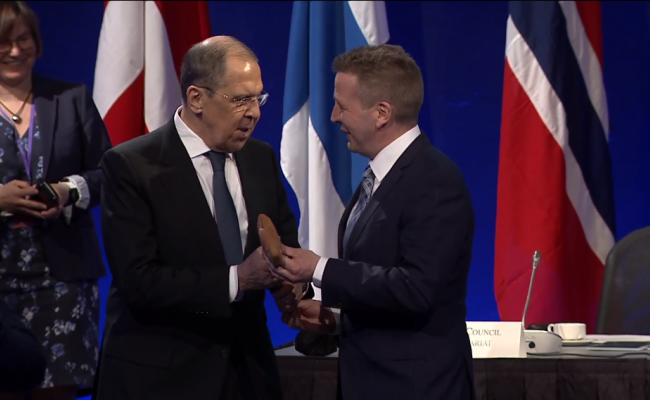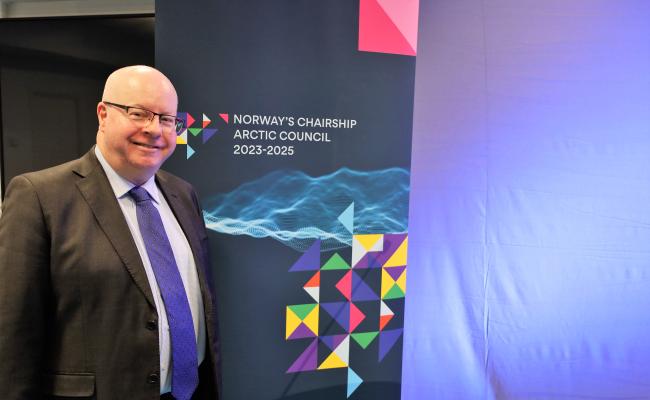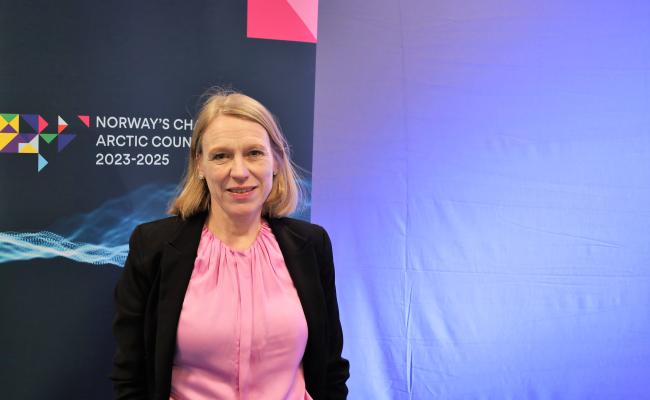Light at the End of the Tunnel for the Arctic Council
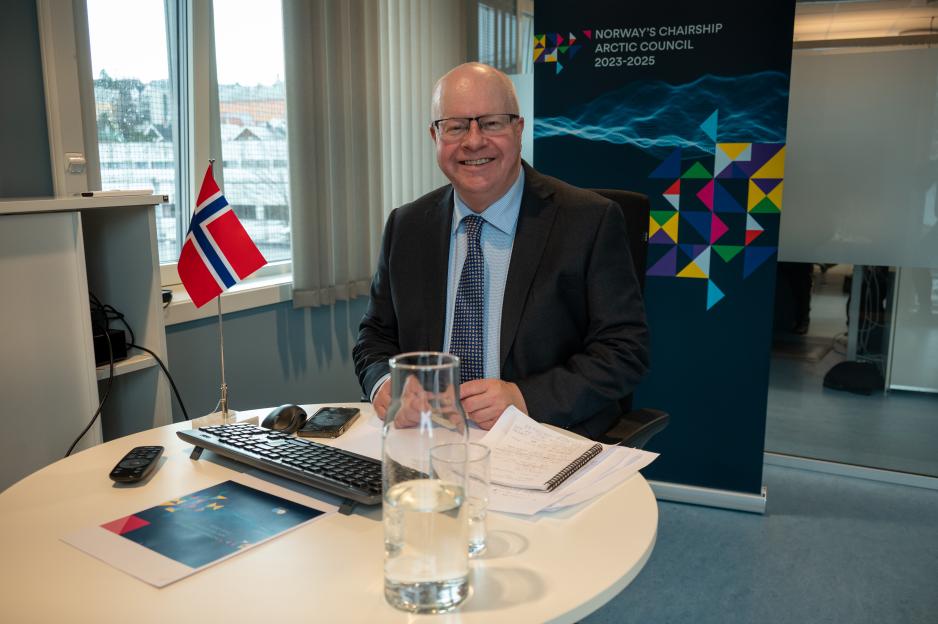
Morten Høglund, Arctic Ambassador for Norway and Chair of the Senior Arctic Officials under the Norwegian chairship. (Photo: Jessica Cook/the Arctic Council's secretariat)
All Arctic countries have agreed on new guidelines that allow the Arctic Council's working groups to resume their activities. "This is an important breakthrough," says Morten Høglund, who leads the council under Norway's chairship.
The eight Arctic states – Norway, Canada, the US, Denmark, Iceland, Finland, Sweden, and Russia – agree on a critical first step forward for the Arctic Council:
New guidelines allow the working groups and the expert group, where the council's main work takes place, to resume their activities.
The agreement has been reached in consultation with the six indigenous organizations that are permanent participants of the council.
"We are pleased that Russia and the other Arctic countries wish to resume the Arctic Council's work. This is the best basis for movement," an encouraged Morten Høglund says to High North News.
He is Norway's Arctic Ambassador and Chair of Senior Arctic Officials under the Norwegian chairship.
A memory refresh
– The Arctic Council is a high-level intergovernmental forum for cooperation between the region's eight states, indigenous peoples, and other inhabitants in shared Arctic issues – particularly sustainable development and environmental protection.
– After Russia's full-scale invasion of Ukraine, the seven western Arctic states temporarily paused the council's work.
– On its side, the council's Russian chairship (2021-2023) continued with its program and conducted several events with participation from "friendly countries", such as China and India. These two are observer states in the council.
– In June 2022, the seven western Arctic countries resumed some project work within the council without Russian participation.
– Since May 11, the search for future solutions for the Arctic Council has taken place under Norway's chairship (2023-2025).
A cooperative Russia
How do you assess the contact with the Russian side?
"We have had good sessions on different issues in the active dialogue with Russia, as with the other countries. Because it took a few rounds before we jointly reached a consensus on the guidelines. Nonetheless, Russia and the other member countries are interested in resuming the council's work. When needed, we have contact and meetings with the Russian side, and the conversation is constructive and okay," responds Høglund.
A recent overview by High North News shows that Moscow is keeping the door open for "effective work in the Arctic Council" and concurrently opening new doors for cooperation in the Arctic with the non-western world.
What is Norway's view on Russia's grand plans for Arctic cooperation with several non-western states? What will this entail for the region?
"I do not want to have too strong an opinion on this. We are concentrating on resuming the Arctic Council's work; in that context, we feel that Russia is giving constructive and positive signals. The Russians are contributing to making this restart work."
"A functioning cooperation between all Arctic countries is important, and it is a shared goal from our experience on the Norwegian side. Furthermore, Arctic states cooperating in the region with other countries is not abnormal. The best answer to possible challenges with such cooperation is that we hold on to the Arctic Council as the most important forum for Arctic issues," he adds.
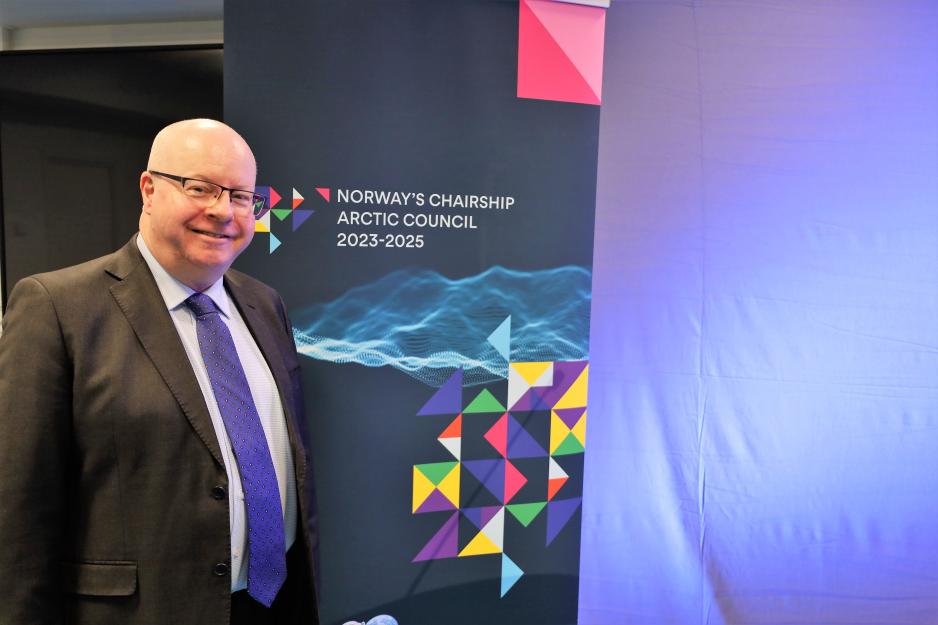
"It is important [to the Norwegian chairship, ed. note] that the process is inclusive and to make sure that everyone is comfortable with the way forward. We are ambitious, we are eager, and we want to see the work started as soon as possible," said Morten Høglund, as new Chair of the Senior Arctic Official in May. (Photo: Hilde Bye)
The agreement in practice
Since Norway took over the chairship of the Arctic Council in May, the main focus has been on revitalizing parts of the council's work.
The initiative for close consultations with all the member states and the permanent participants throughout the summer has thus proved fruitful.
In more detail, the new guidelines say that the working groups can initiate decision-making processes and resume existing projects, as well as suggest new ones.
This also includes that the groups may revitalize cooperation with observers and external parties that contribute to their project work.
"This is an important first breakthrough which makes it possible to resume activities in the working groups that involve all the member states, including Russia," says Høglund.
"We have not made any overall decision on what is to be cooperated on or how extensive the cooperation will be. Getting back to the collaboration we had before the invasion of Ukraine in February 2022 will require a lot of time, of course. But we aim to resume large parts of our work in several important fields, such as climate, and start new projects."
Inclusive process
"The leaders of the working groups and the expert groups now have the initiative, and the leadership team will support them as best we can," continues Norway's top Arctic diplomat.
These leaders and their secretariats have also been involved in the larger process that has taken place this summer.
"In June, we invited them to a meeting in Tromsø to discuss the situation. At the time, we had not yet figured out how the work was to be resumed, so it was a coordination and planning meeting. Talking to them about how we establish a new normal has also been important."
"We aim to have good and active contact with all of the Arctic countries and other participants of the Arctic Council. There are no meetings within the council, but from the Norwegian side we have bilateral meetings with everyone involved, including the observers," he says.
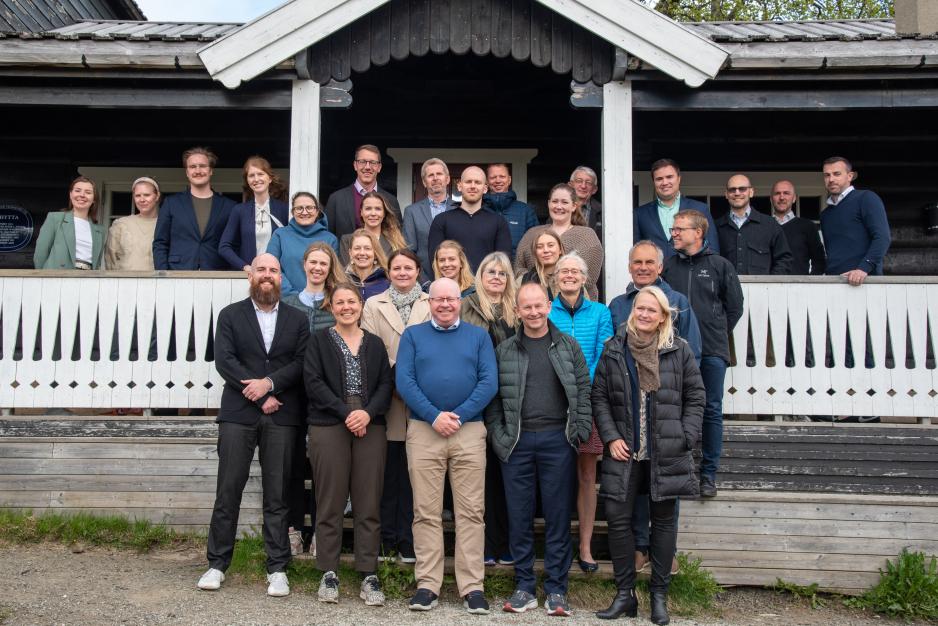
In mid-June, the Norwegian leadership team of the Arctic Council hosted a meeting in Tromsø with the leaders and secretariats of the council's six working groups and one expert group. The purpose was to facilitate communication and cooperation between the chairship and these subordinate bodies early on in the Norwegian chairship period. (Photo: Minetta Westerlund/the Arctic Council's secretariat)
The Arctic Council's six working groups and expert group
– Arctic Contaminants Action Program (ACAP)
– Arctic Monitoring and Assessment Programme (AMAP)
– Conservation of Arctic Flora and Fauna (CAFF)
– Emergency Prevention, Preparedness and Response (EPPR)
– Protection of the Arctic Marine Environment (PAME)
– Sustainable Development Working Group (SDWG)
– Black Carbon and Methane Expert Group
Next natural stage
In parallel with the startup at the working group level, certain decisions are being made at the Arctic Officials level.
"So far, the most important decisions have been in regard to the resumption of the working group's endeavors. There are also matters of a more administrative character," elaborates Høglund.
What is natural to develop guidelines for in the future?
"The guidelines outline that the working groups are to be based on written procedure, which is a very cumbersome and demanding way of communicating."
The chair of the Senior Arctic Officials knows what he is talking about, as the procedure is also used at his level.
"For more activity – and especially for the development of new projects – we need to get to a stage where the working groups can meet, for example, on digital platforms. It will be a necessary step, but we recognize that it is not possible to take right now," says Høglund and continues:
"Eventually, the guidelines will have to reflect the need for more effective collaboration within the working groups. It is precisely at this level that more robust working methods are most needed. Because meetings at a political level are not possible in the current situation. We also do not have SAO meetings on our agenda. The horizon is longer when it comes to these other two levels."
Interested observers
But as mentioned, Norway is carrying out bilateral meetings, including with the observers of the Arctic Council.
This spring, China, one of the observer states, announced that it would support Norway in the work to restart the Arctic Council's engines.
What role have the observer states, particularly China, played in the summer's processes?
"The 38 observers, of which 13 are states, are showing interest in the efforts to take this cooperation forward. They primarily participate at the working group level in the council's activities and will be re-connected to the project work going forward. We try to give them regular information as we recognize their important role in concrete work over the years. However, the council's formal decision-making processes, such as the agreement on the new guidelines, are reserved for the Arctic 'elementary family'," says Høglund.
In 2013, the Arctic Council received an application from the EU for observer status, but this has still not been granted due to opposition from Russia. Will this matter be revisited with Russia more on the sideline?
"Not in the short term. The EU is included in all relevant contexts, which was also the case during the Russian chairship. In more detail, we inform and communicate with the EU as with other observers. For all practical purposes, the EU is an observer on an equal footing with the others. There is thus only one formality left, but this is not the time to address this."
Norway's new SAO
In August, it was announced that Norway has a new Senior Arctic Official, Solveig Rossebø.
How is the division of labor between you and Rossebø?
"When different countries have the chairship of the Arctic Council, they always have a chair of the Senior Arctic Officials, which is me, as well as a spokesperson for the national priorities in the leadership program," says Høglund and continues:
"My job is to be a leader for everyone in the council as far as possible. I will not only be a spokesperson for Norway but also talk to all the countries and the international secretariat in Tromsø – and ensure that things work. Solveig has the task of promoting Norway's priorities in the council's work and coordinating Norwegian participation in the working groups – which was my function previously. If we had had SAO meetings, I would have led them, and Solveig would have sat with the Norwegian flag."
And a new link in Tromsø
In addition, the Norwegian Ministry of Foreign Affairs has a new project position in the city of Tromsø for the country's two-year chairship of the Arctic Council. The role will be connected to the council's international secretariat, which is located at the Fram Centre.
"We were very pleased to see many applicants for the position. During the summer, we hired a person who will start the position shortly," says Høglund.
"First and foremost, this position will strengthen our work with the leadership of the Arctic Council while also contributing to better communication between actors in the north and us who sit in Oslo. We look forward to having a colleague in Tromsø!"
Also read
This article was originally published in Norwegian and has been translated by Birgitte Annie Molid Martinussen.


